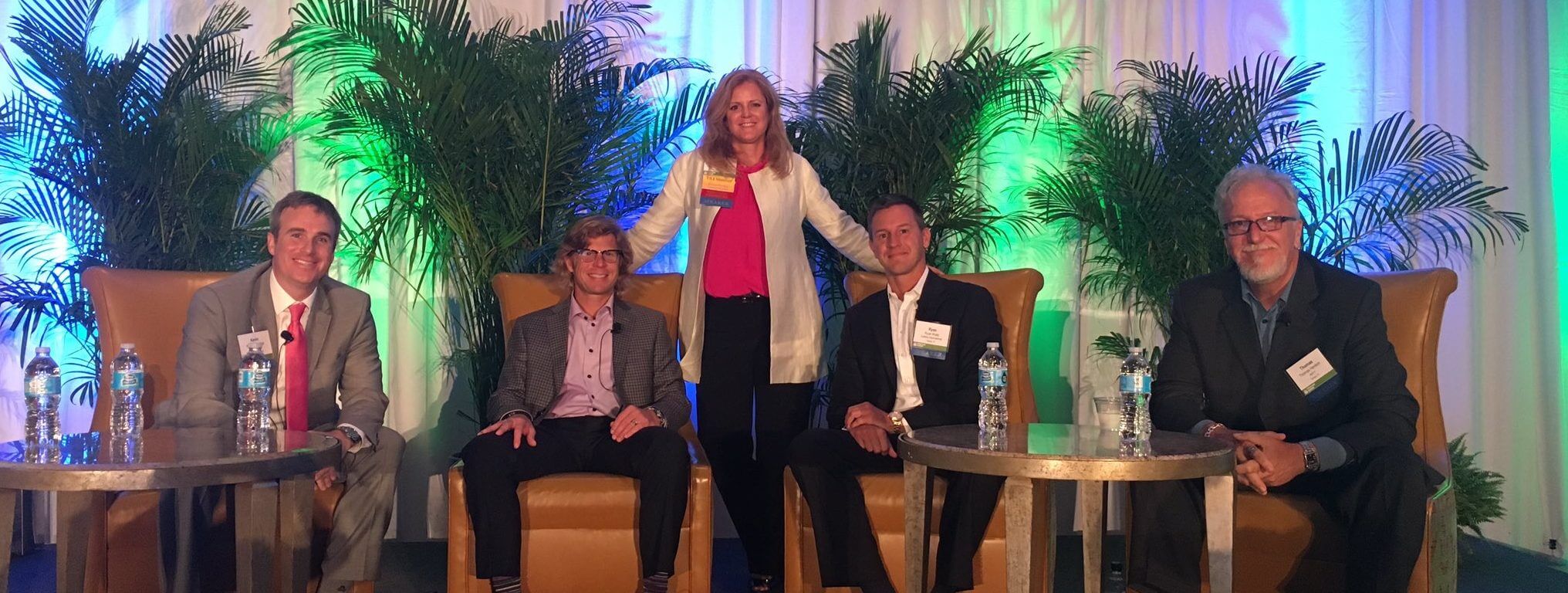
B2 was heavily involved in this year’s Urban Land Institute Florida Summit, which brings together hundreds of professionals from around the state who care about responsible land use, growth and development.
Our team handled media relations leading up to and during the event, and we also sat in on several sessions to live-tweet as some of the state’s most prominent real estate and development leaders discussed major trends in the industry. Here are some of the highlights:
1. The changing retail environment.
While many say retail is dying, panelists in ULI’s “Creative Retail Therapy” session would tell you that’s not the case. The retail market is simply changing, and smart retailers need to change with it.
While traditional retailers often complain that online shopping and e-commerce platforms like Amazon are hurting their business, Ryan Kratz, President of Colliers International Florida, has another take. The real issue, he says, is that many brick-and-mortar retailers don’t provide their customers with the experience they are seeking.
Big-box retailers like Macy’s and Sears are failing because they haven’t changed their stores in decades, and shoppers have no motivation to opt for the experience they provide over an online alternative. Kratz says using augmented and virtual reality could likely be a solution to helping retailers revolutionize the way their products are viewed and sold.
Panelists also predict experiential retail to take shape in other forms, such as food halls that provide a dining/market blend, and retail distribution centers where shoppers can pick up online orders.
2. Using pop-up shops and multi-use buildings.
Panelists in the “Keeping Your Options Open: The Dollars and Sense of Adaptable Design & Development” session discussed an emerging real estate concept called “optionality,” which refers to the adaptability of a property. A lack of open land in urban areas makes adaptable design necessary for development, panelists explained.
Single buildings with a layout that allows for multiple uses (with multiple entrances, a centrally placed elevator and outdoor space, for example) are best suited for optionality.
This could mean anything from renting an office space to a pop-up coffee shop or retail boutique on nights and weekends, to hosting Saturday morning yoga classes in open-air outdoor spaces.
Another aspect of adaptable design is when a property is built in a way that allows different owners to convert it to different uses. Aloft Tampa Downtown Hotel is a prime example of this. The property was originally built as a bank, then served as an office building, and today is one of downtown Tampa’s premier hotels.
3. The best way to measure demographics.
John Burns, CEO of John Burns Real Estate Consulting and co-author of “Big Shifts Ahead: Demographic Clarity for Businesses,” presented a new way to look at demographic trends affecting the real estate industry.
Burns discovered significant patterns and trends by dividing the population by the decades people were born in rather than by generational segments of 20+ years, such as Millennials, Baby Boomers, Gen X-ers, etc.
For example, individuals born in the 1930s, who Burns calls the “Savers,” experienced forced frugality during the Great Depression, so they kept those habits later in life. Another group, the “Equalers,” who were born in the 1960s, saw an increase in immigration and strong female leaders in the home with 60 percent of women in the workforce.
Burns further explained the impact Millennials will have in the housing market. When split into two decades, the “Sharers,” born in the 1980s, had the most student debt while experiencing high unemployment rates. In contrast, the “Connectors,” born in the 1990s, were mostly raised in single-parent homes, are highly educated and are warier of credit.
B2 Principal Kyle Parks is the PR & Marketing Chair for ULI Tampa Bay, and B2 Account Executive Tyler Killette is a ULI Tampa Bay member involved in the organization’s Young Leaders Group and Women’s Leadership Initiative.
